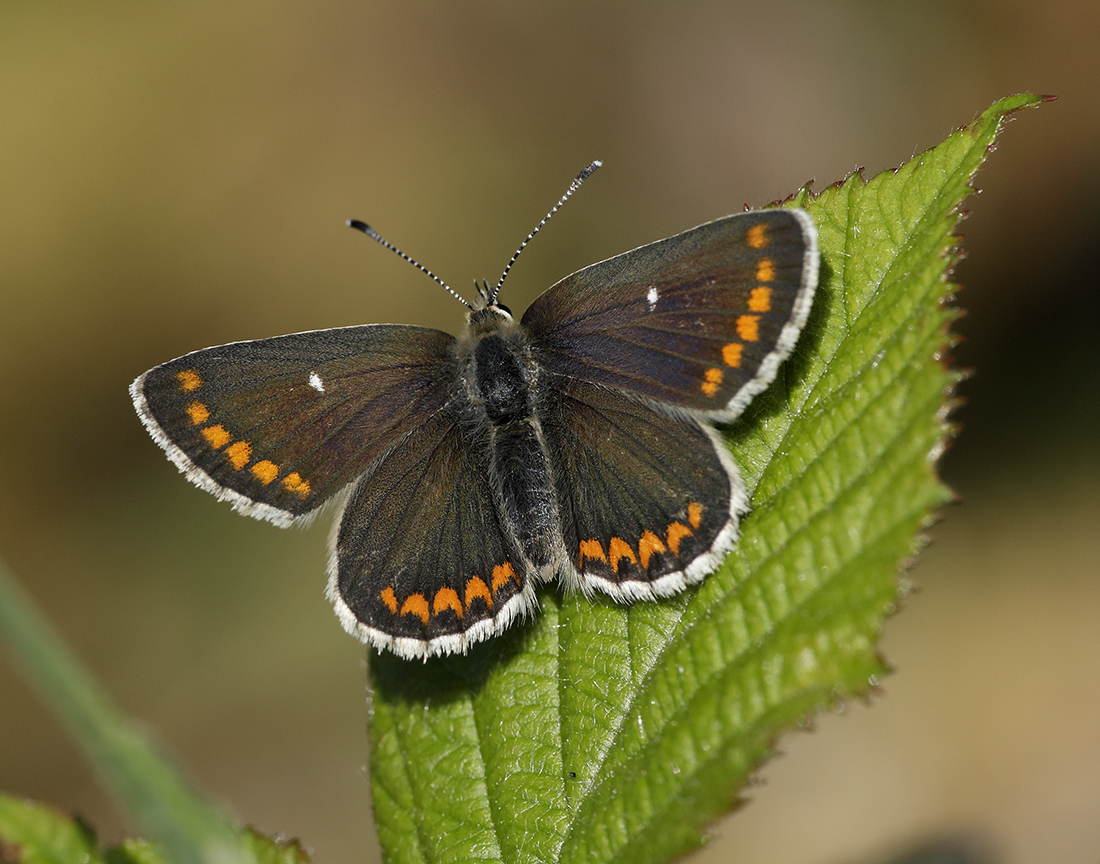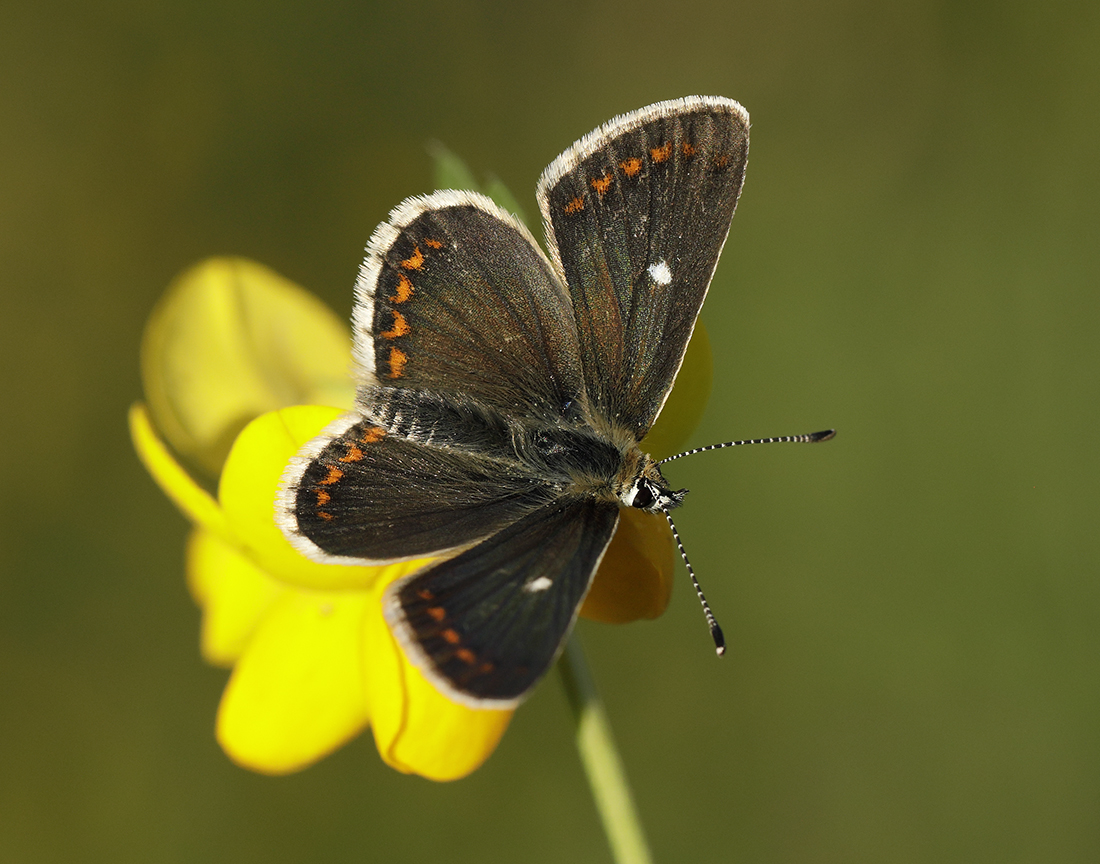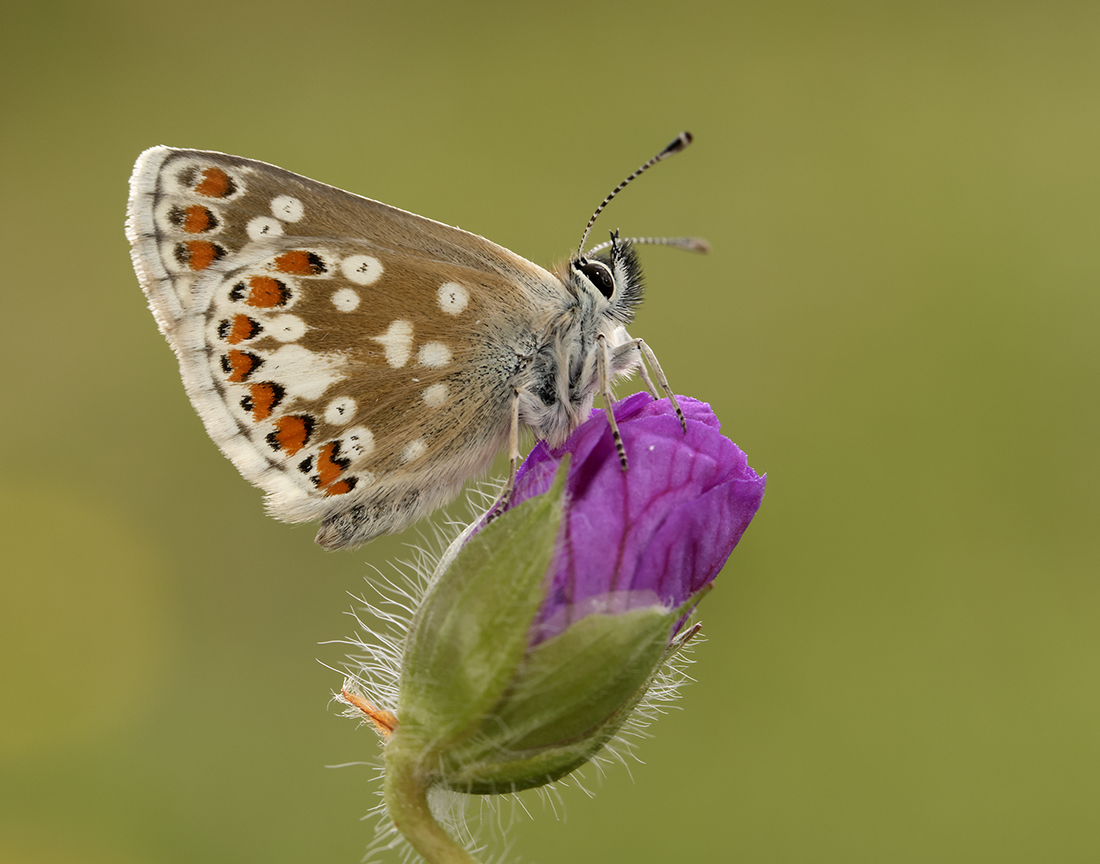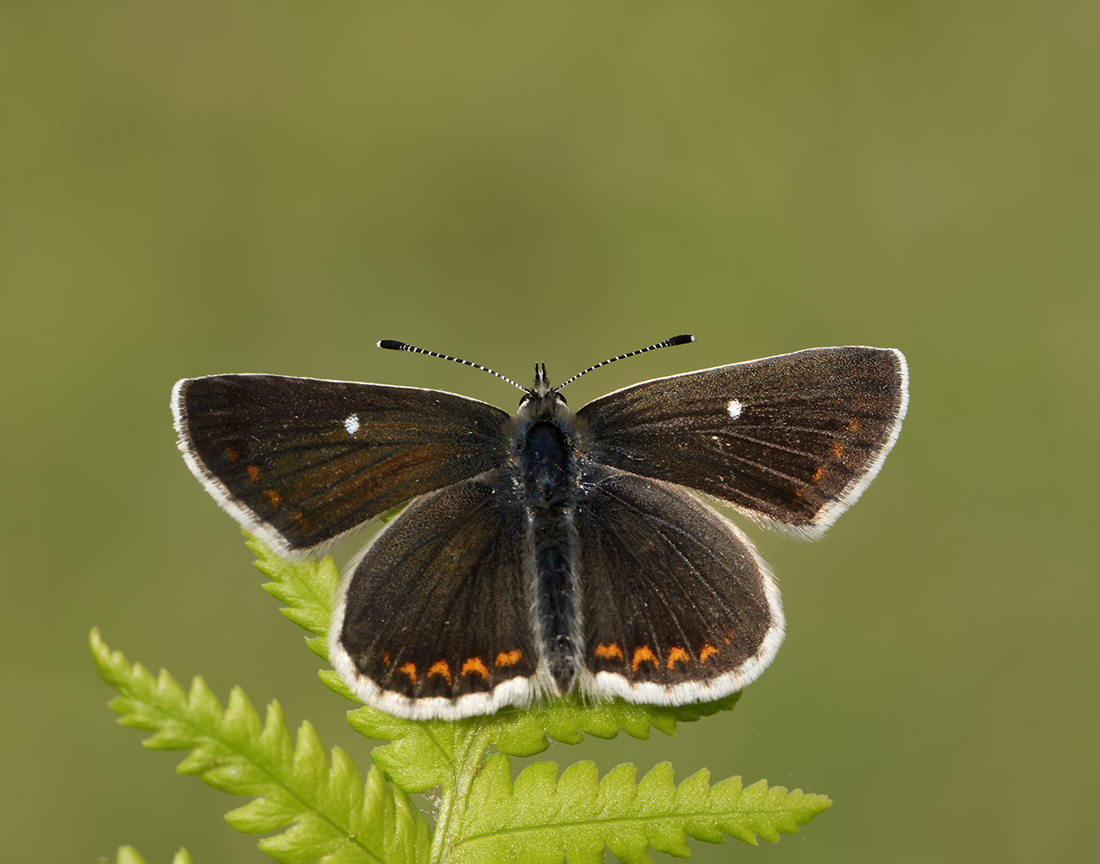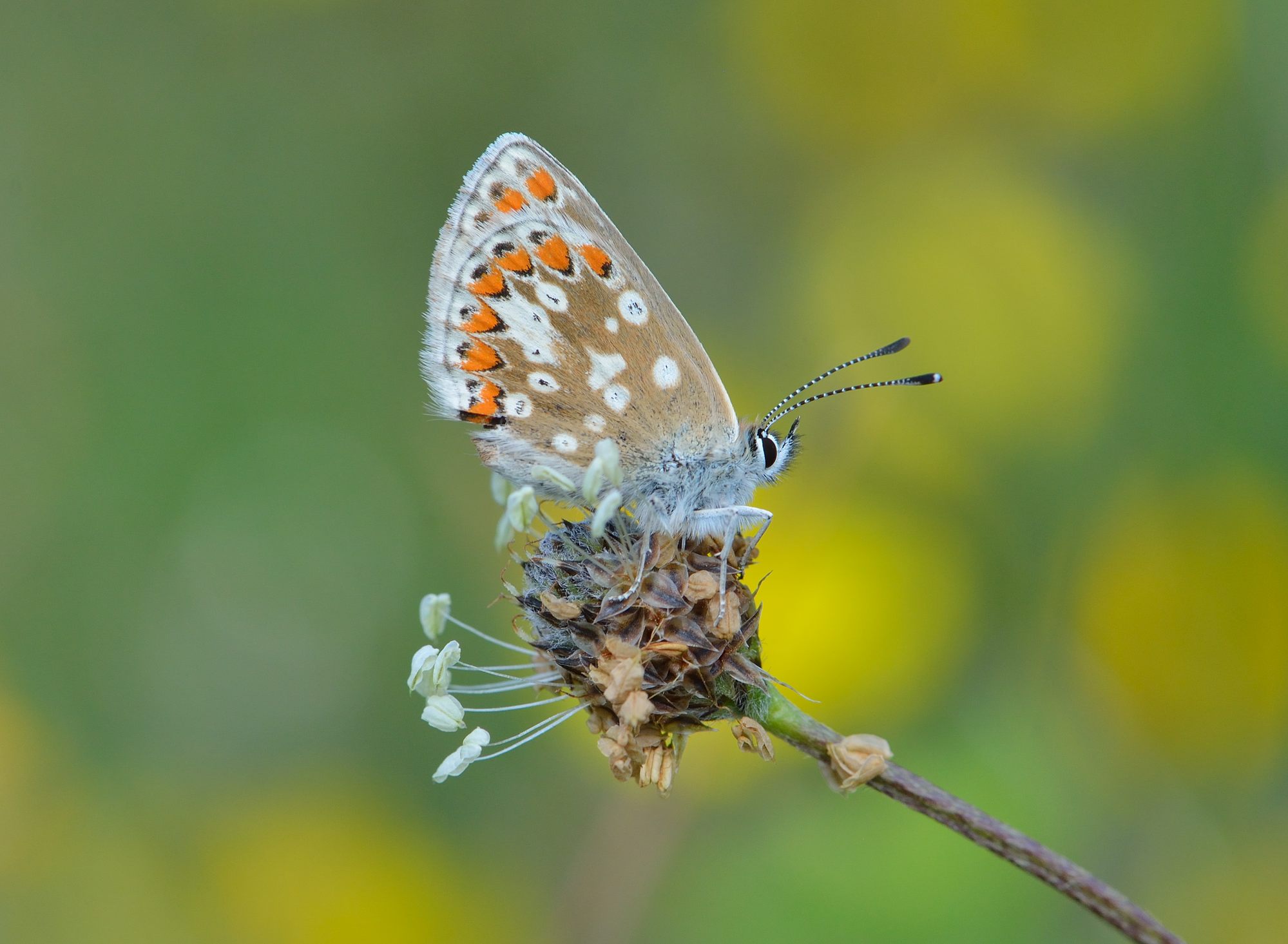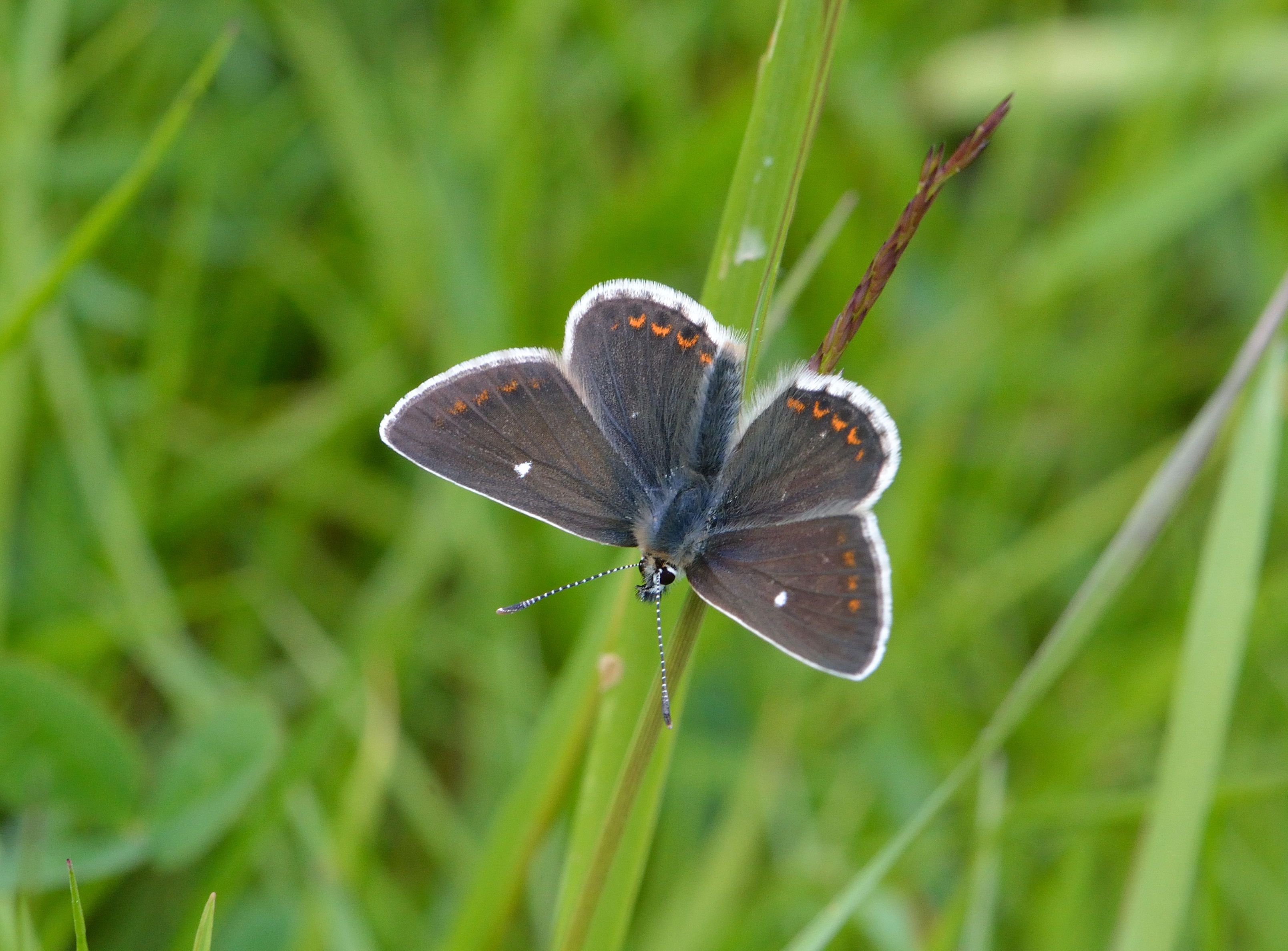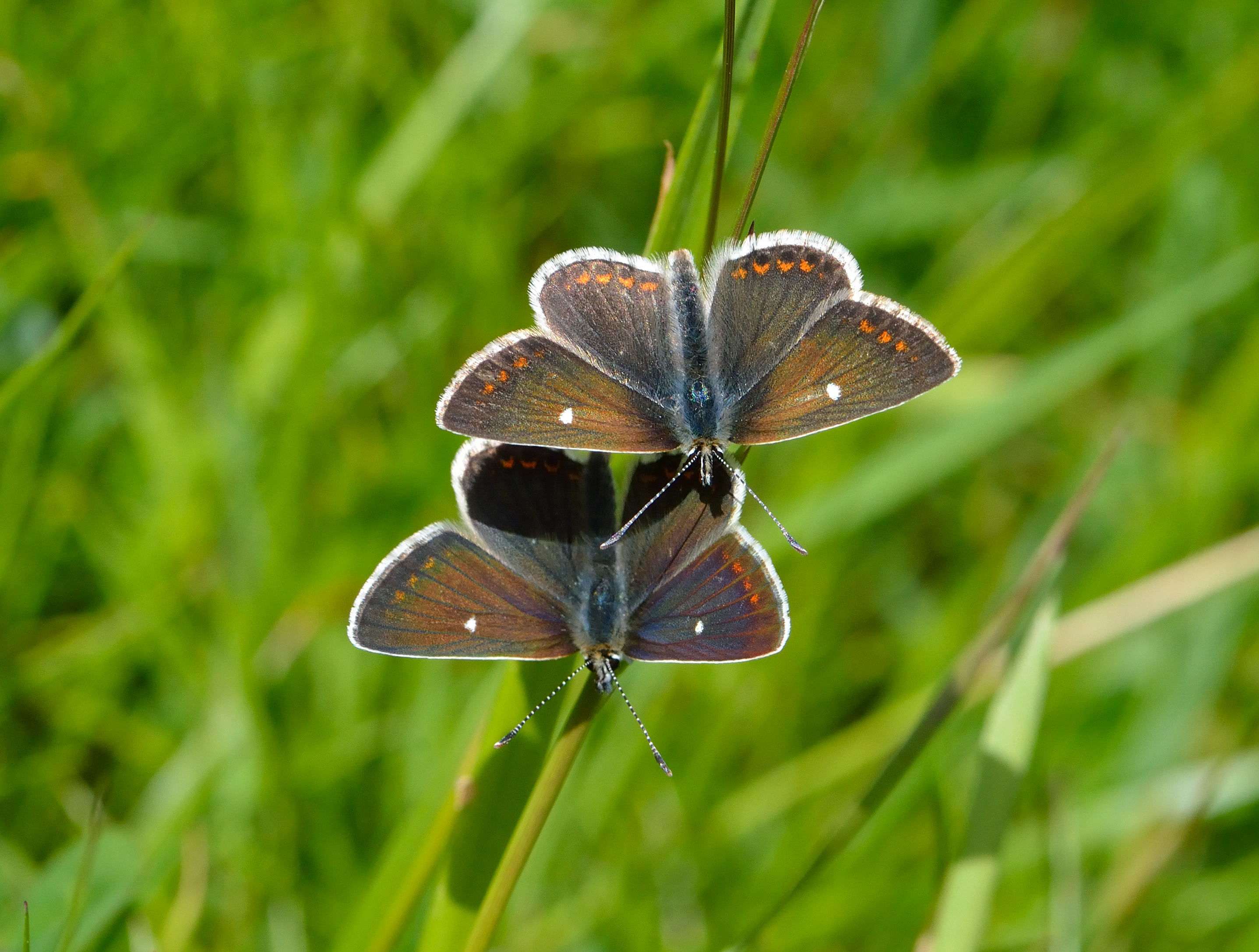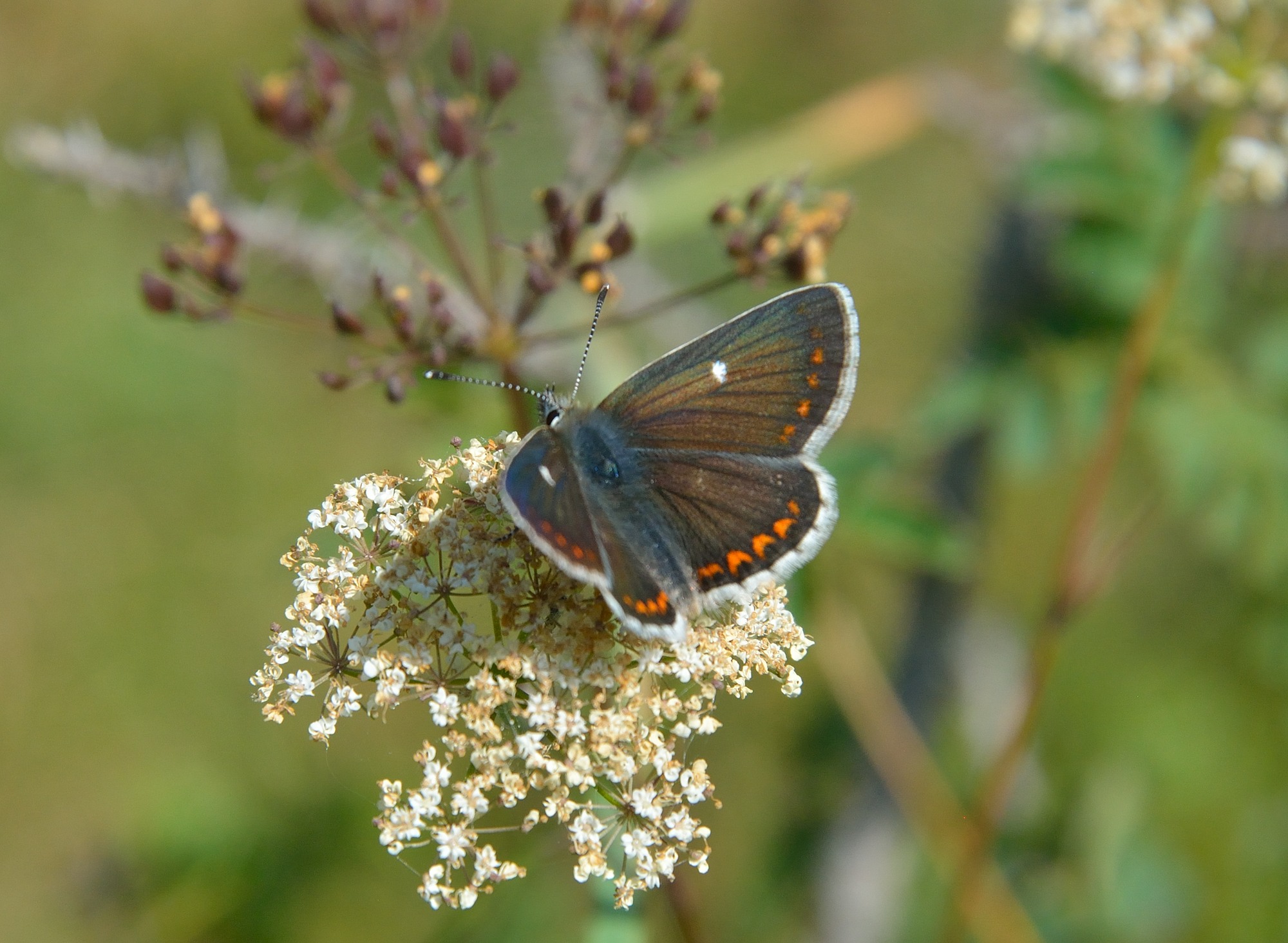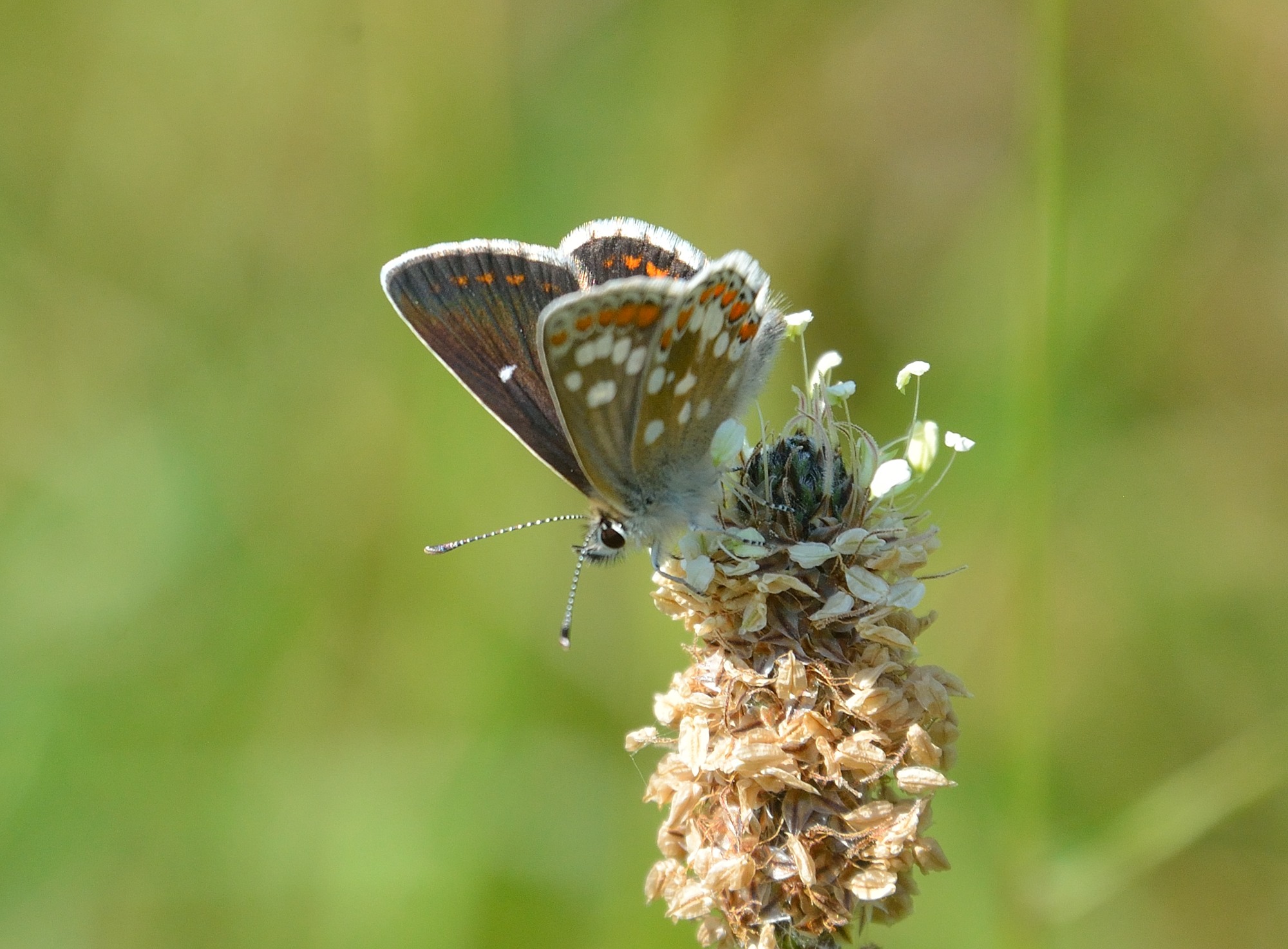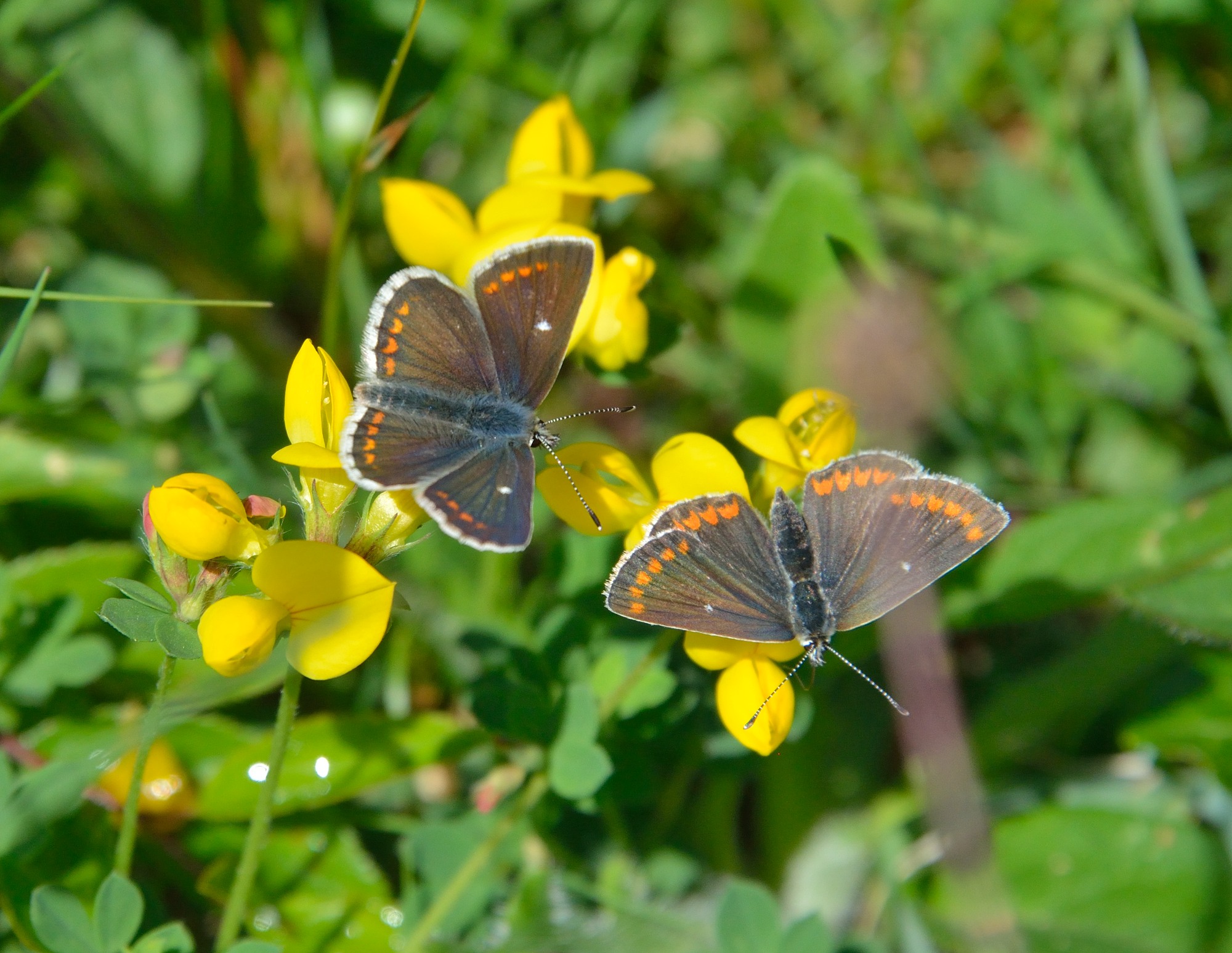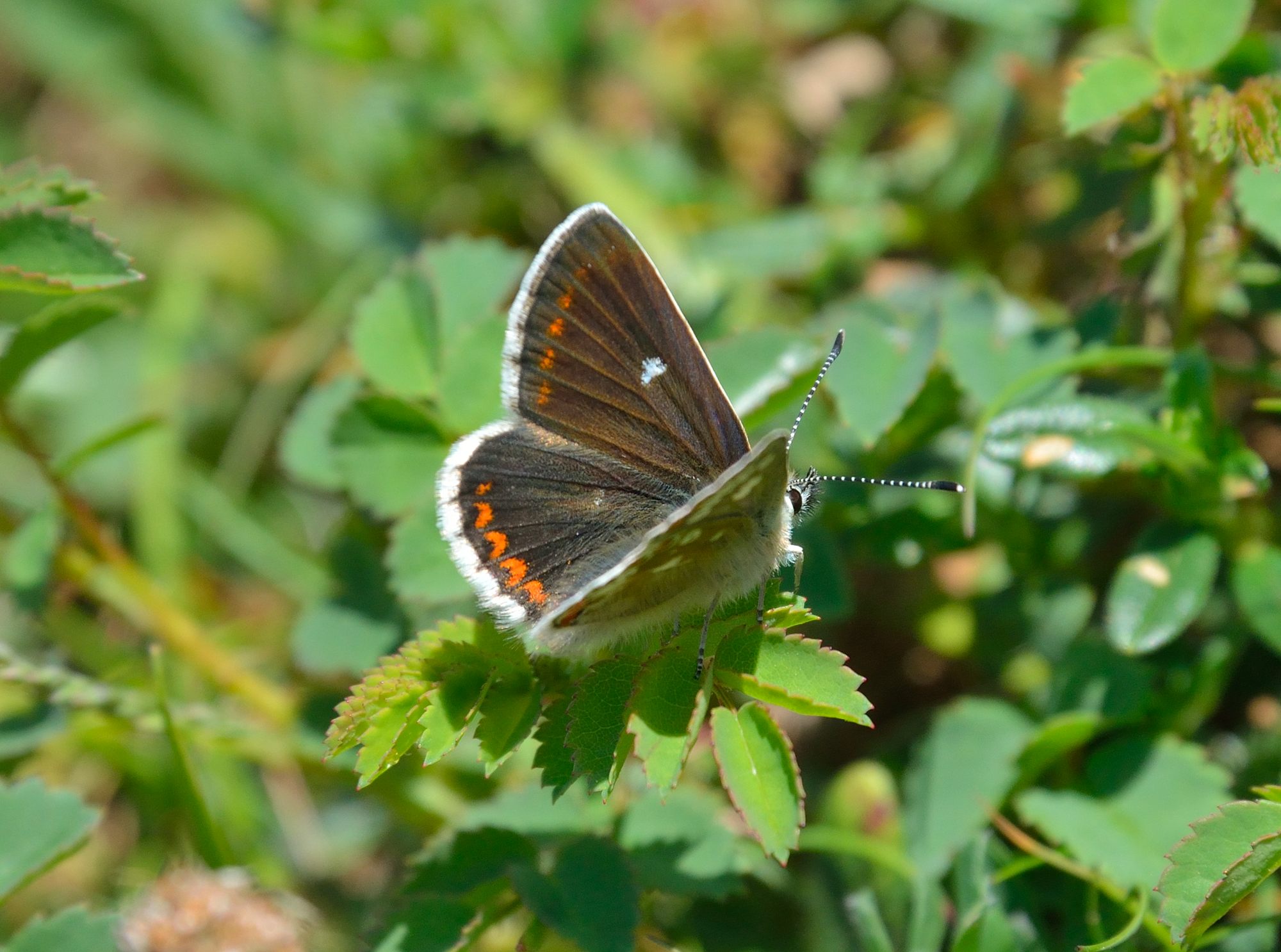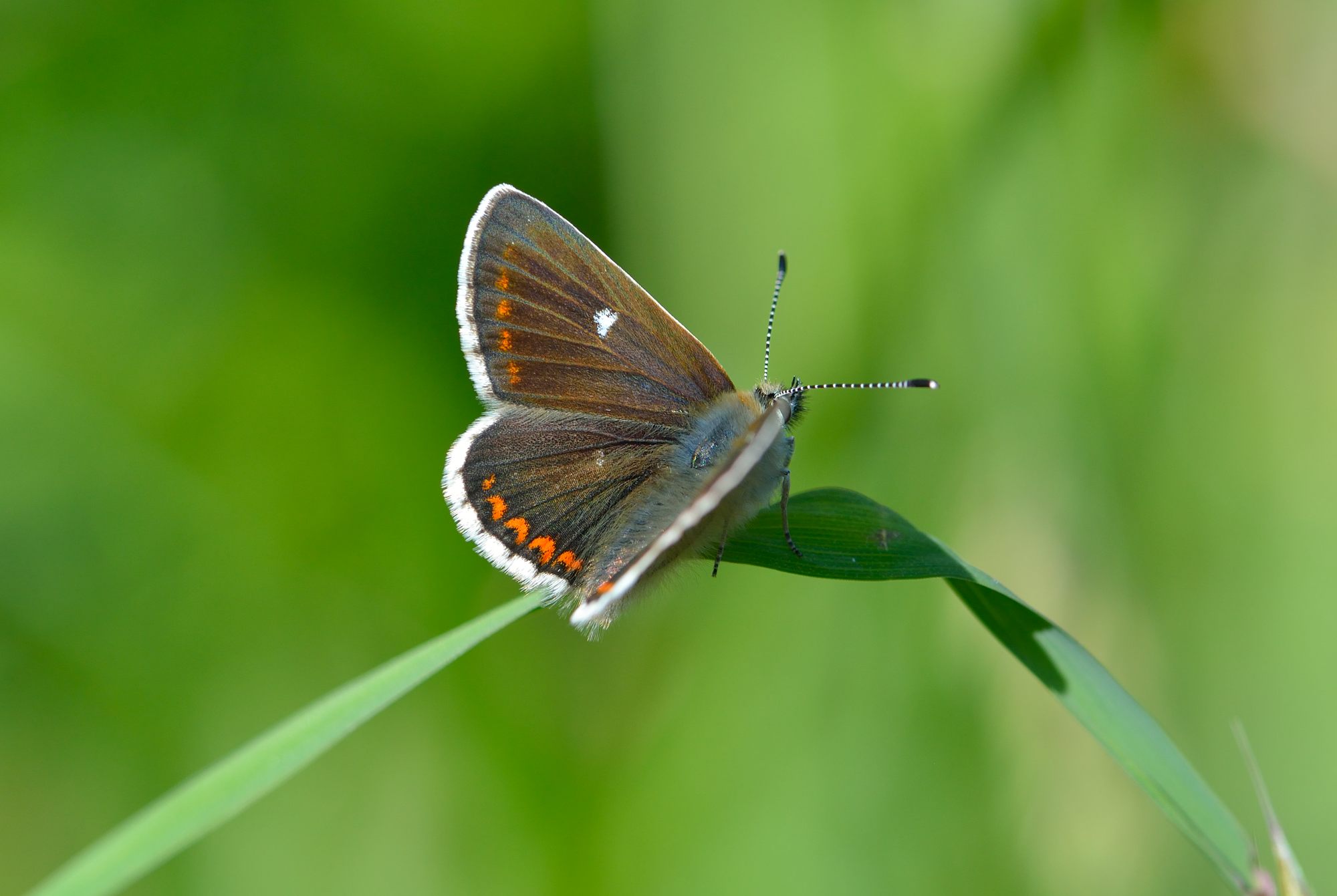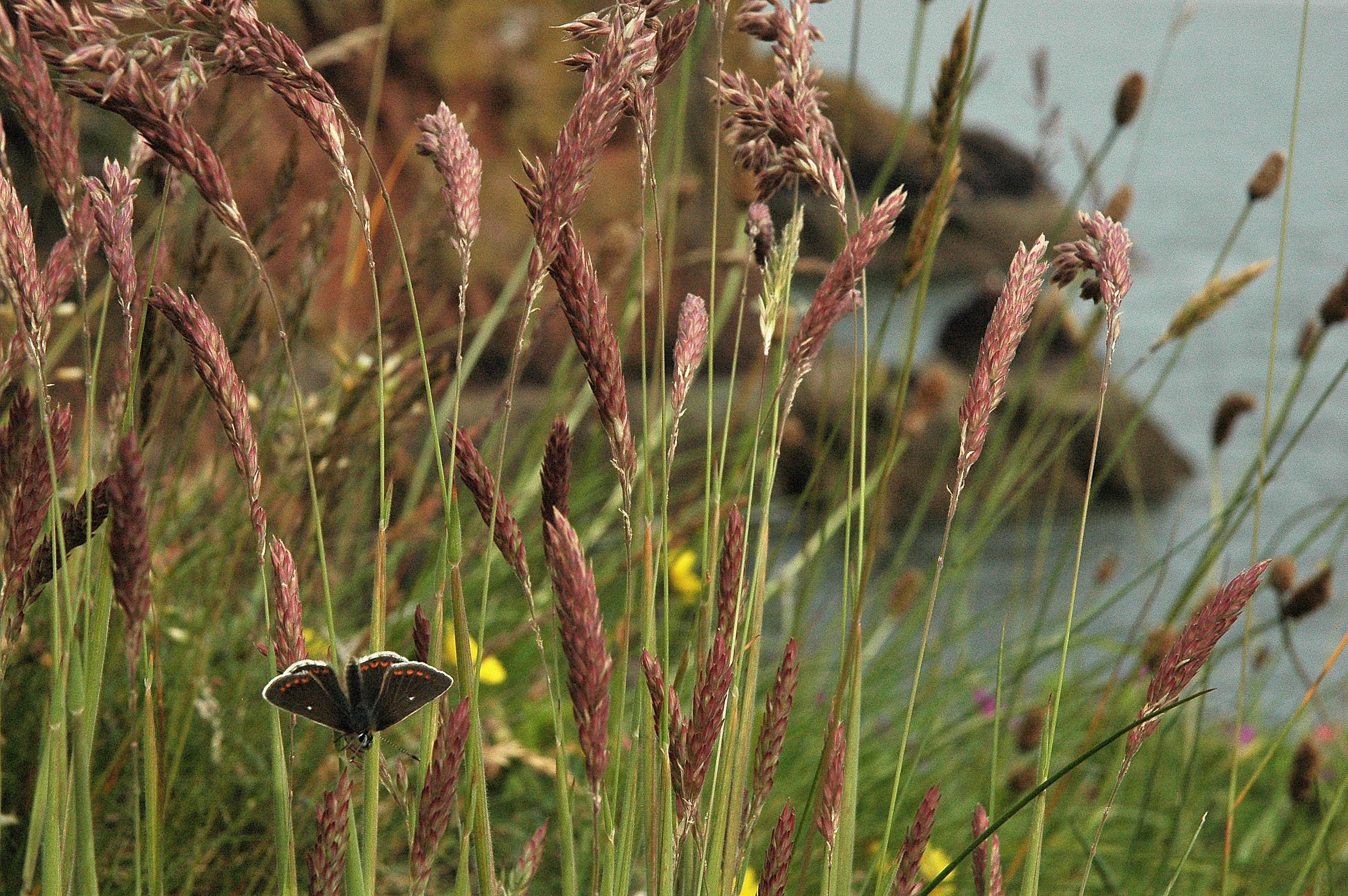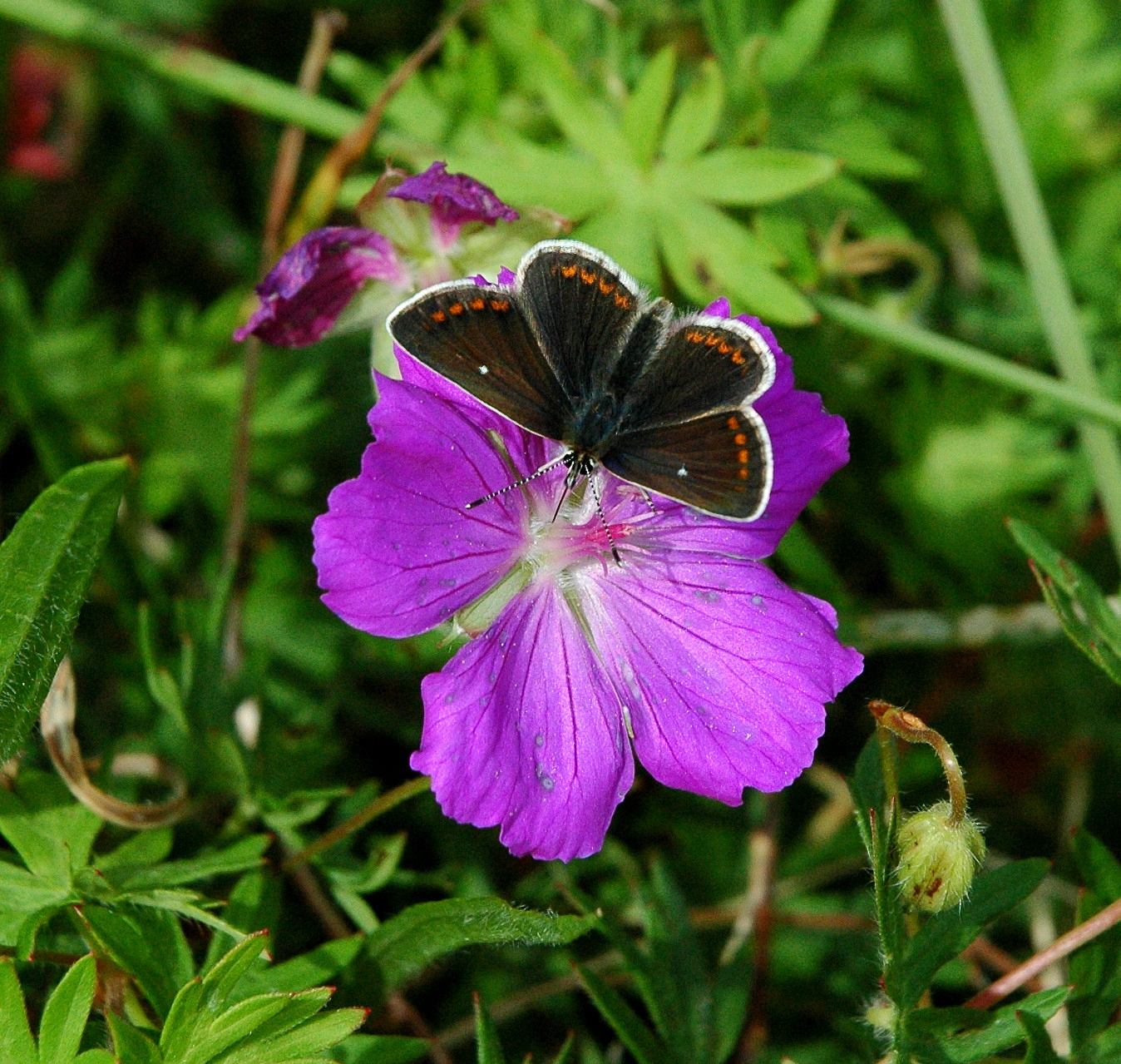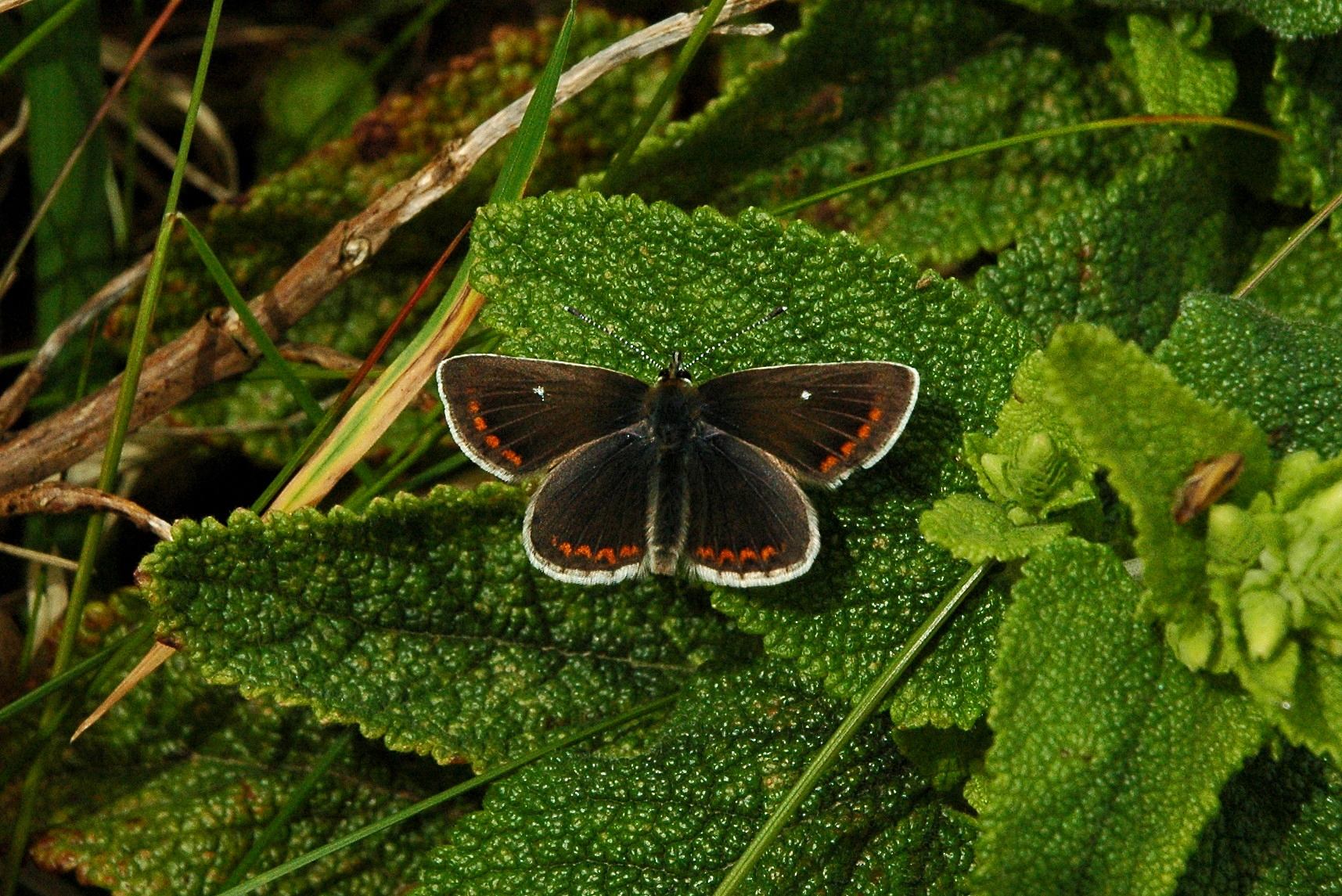The Northern Brown Argus occurs almost everywhere where its sole caterpillar foodplant, Common Rock-rose grows, but the insect and plant are both are very localised. It is most frequent along the Galloway coast and some inland parts of Kirkcudbrightshire. The Dumfriesshire coast is unsuitable and the very few inland populations are in the west of that county.
Its overall range seems stable at present, although some site losses have been recorded through too much or too little grazing and work is under way on some sites to remove encroaching Gorse to restore and improve habitat. A few sites have been lost to afforestation, and on farmland the habitat is vulnerable to changes in grazing regime.
Identification
When newly emerged, the Northern Brown Argus is anything but drab—it has a beautiful, deep, dark chocolate velvety sheen, with brilliant white spots on its wings. The Northern Brown Argus could be confused with a female Common Blue, which can occur in the same habitats at the same time, but the white spot on each forewing of the former should distinguish it. The underwings also differ with the Northern Brown Argus having numerous pure white spots whereas in the Common Blue the white spots have black centres.
The white eggs are laid on the upper side of the leaves and are very conspicuous, providing a very useful method for confirming the presence of the butterfly. On hatching, the tiny Northern Brown Argus caterpillar crawls to the underside of the leaf and feeds from below, creating pale ‘windows’ on the leaf surfaces, which can betray its presence to keen recorders.
Life cycle & flight period
One generation a year, the adults flying from late May to late July, peaking in June. Overwinters as a caterpillar.
Larval foodplant
The female tends to choose larger, vigorous plants of Common Rock-rose on sunny slopes for egg-laying.
Habitats
The Northern Brown Argus uses natural, unimproved, often stony or rocky grasslands that have plenty of Common Rock-rose, and have sparse scrub or tall grasses for roosting and perching. The ideal grassland for the Northern Brown Argus is lightly grazed, so that the Common Rock-rose plants are able to grow well and form small tussocks, sometimes on ant nests. Too little grazing allows tall herbs, grasses and bracken, and eventually scrub, to shade out the food plant.
Common Rock-rose begins to flower in May and looking out for this easy to spot plant can be a good way of locating Northen Brown Argus colonies later in the year. Bloody Cranesbill is another good indicator plant of the butterfly’s habitat.




